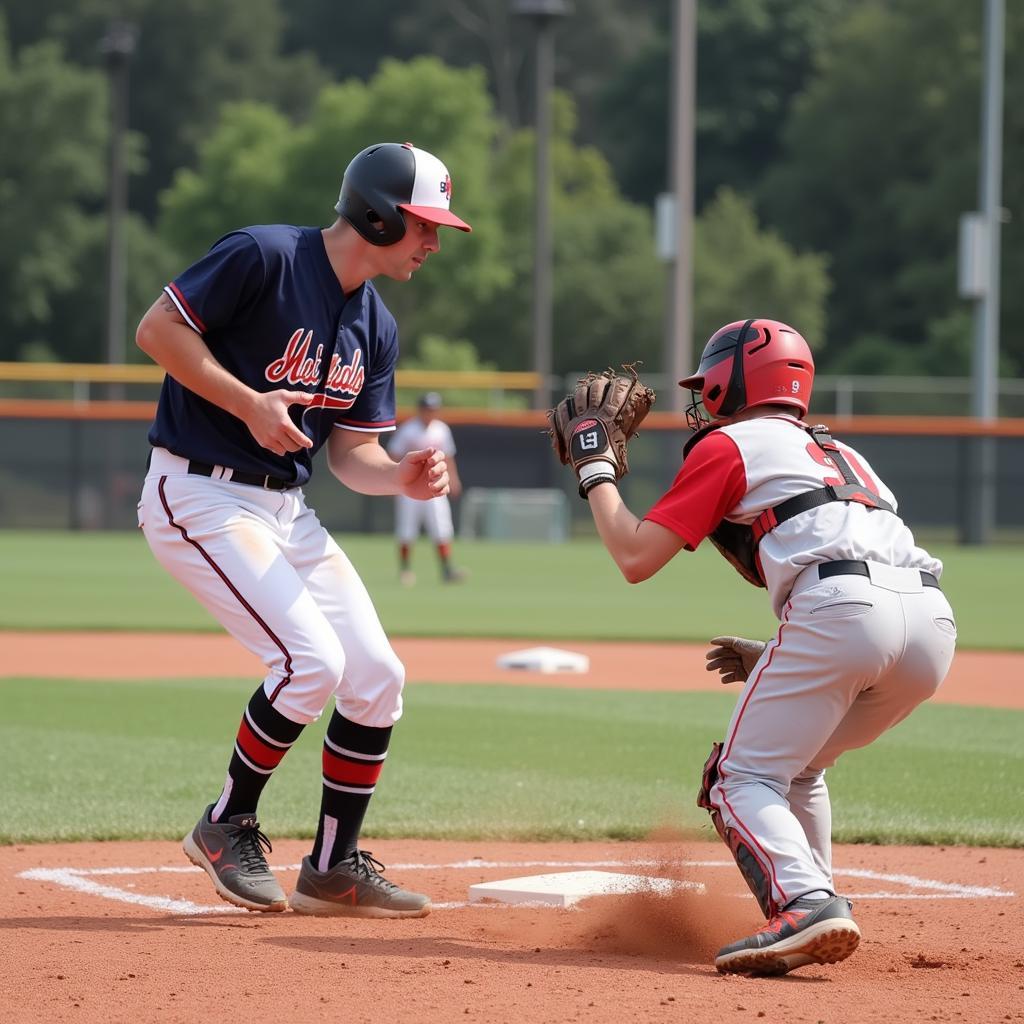Hit and Run Softball: Mastering the Technique and Strategy
Hit And Run Softball is a strategic offensive play designed to advance runners and create scoring opportunities. It demands precise timing, communication, and execution between the batter and the baserunner. This in-depth guide will explore the intricacies of the hit and run in softball, covering everything from the fundamentals to advanced strategies.
For teams looking to add a dynamic element to their offensive arsenal, the hit and run can be a game-changer. It’s not just about getting a hit; it’s about putting pressure on the defense, forcing errors, and manufacturing runs. Let’s dive into the mechanics and the strategic thinking behind this exciting play.
Understanding the Mechanics of the Hit and Run
The hit and run relies on synchronized action. As the pitcher begins her delivery, the baserunner takes off for the next base, essentially stealing. The batter’s role is crucial: they must make contact with the ball, regardless of its location in the strike zone. Even a weak ground ball can be effective if it advances the runner. This commitment to contact distinguishes the hit and run from a standard steal or bunt.
The success of the hit and run hinges on several key factors: the baserunner’s speed, the batter’s ability to make contact, and the element of surprise. By initiating the run before the pitch is thrown, the offense catches the defense off guard, potentially creating gaps in the infield and disrupting their timing.
Check out our selection of softball white socks.
Strategic Considerations for the Hit and Run
The hit and run isn’t always the right call. Certain game situations lend themselves to this play more than others. Consider using the hit and run when:
- A runner is on first base with less than two outs.
- You need to advance a runner into scoring position.
- The opposing defense is playing tight, leaving gaps in the infield.
- Your batter is a contact hitter who can reliably put the ball in play.
- You want to disrupt the opposing pitcher’s rhythm and concentration.
However, avoid the hit and run when:
- Your batter is struggling to make contact.
- The opposing pitcher has a high strikeout rate.
- You have a power hitter at the plate who could potentially hit a home run.
- There are two outs and a runner on third. A simple base hit could score the run.
 Successful Hit and Run Play
Successful Hit and Run Play
Advanced Hit and Run Strategies
Beyond the basic hit and run, there are variations that can further enhance its effectiveness. The delayed steal hit and run involves the runner delaying their steal until the pitcher has committed to their pitch. This can be particularly effective against pitchers with slow deliveries. The fake hit and run involves the runner feigning a steal, forcing the defense to react, before returning to first. This can create opportunities for a standard hit or another offensive play. You might also be interested in At Last and Co.
Coaching the Hit and Run
Coaches play a vital role in the success of the hit and run. Clear and concise communication between the coach, batter, and runner is essential. The coach should signal the play discreetly, ensuring the opposing team doesn’t catch on. They should also prepare their players for various scenarios, such as what to do if the pitcher throws a ball or a wild pitch.
Hit and Run Softball: A Powerful Weapon
The hit and run is a complex yet rewarding play in softball. When executed correctly, it can create scoring opportunities and put immense pressure on the defense. By understanding the mechanics, strategic considerations, and advanced variations, coaches and players can effectively utilize the hit and run to gain a competitive edge. For a look at high-quality bats, consider the new mantra softball bat.
While mastering this technique requires practice and communication, the rewards are well worth the effort. Consider adding the hit and run to your softball playbook, and watch as your offense comes alive.
FAQ
- When is the best time to call for a hit and run?
- What are the risks associated with the hit and run?
- How can I improve my team’s hit and run execution?
- What should the batter do if the pitcher throws a ball during a hit and run?
- What are some common mistakes teams make when executing the hit and run?
- Can the hit and run be used with runners on other bases besides first?
- How does the hit and run differ from a straight steal?
Looking for team name inspiration? Check out our article on names for softball teams. Or, for more advanced softball tips and tricks, check out all pro softball.
Need assistance with your softball strategy? Contact us! Phone: 0989060241, Email: besiktasvn@gmail.com or visit us at: Tở 2, ấp 5, An Khương, Hớn Quản, Bình Phước, Việt Nam. We have a 24/7 customer support team.

